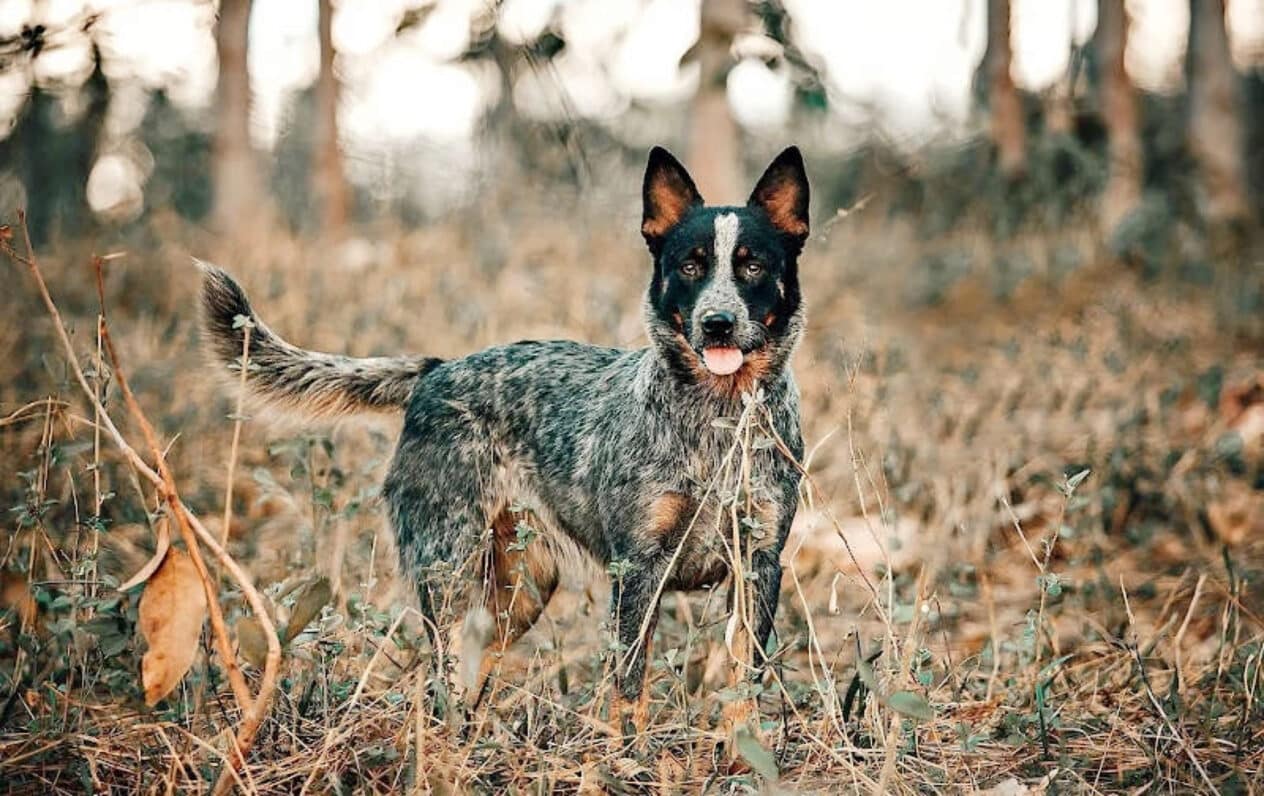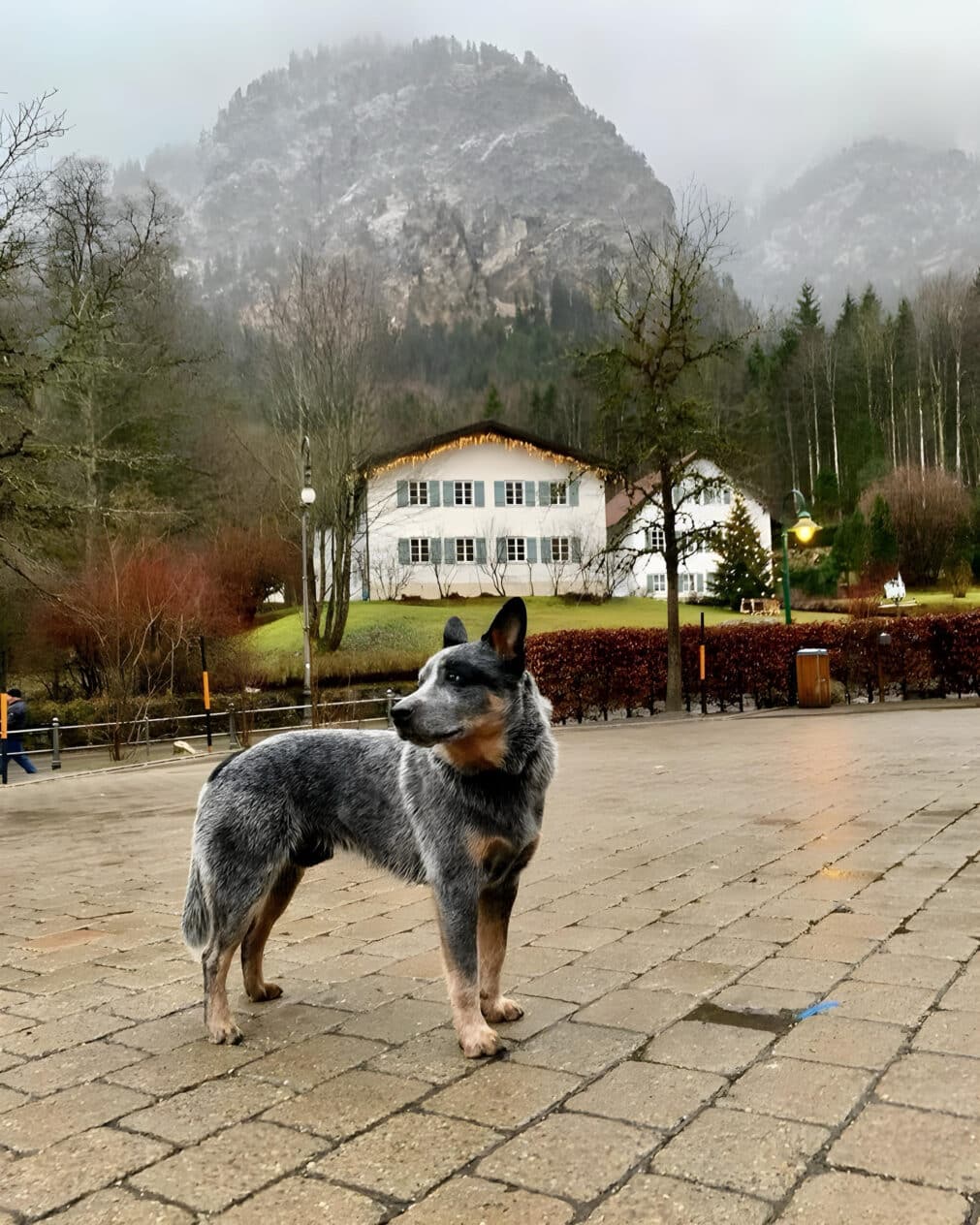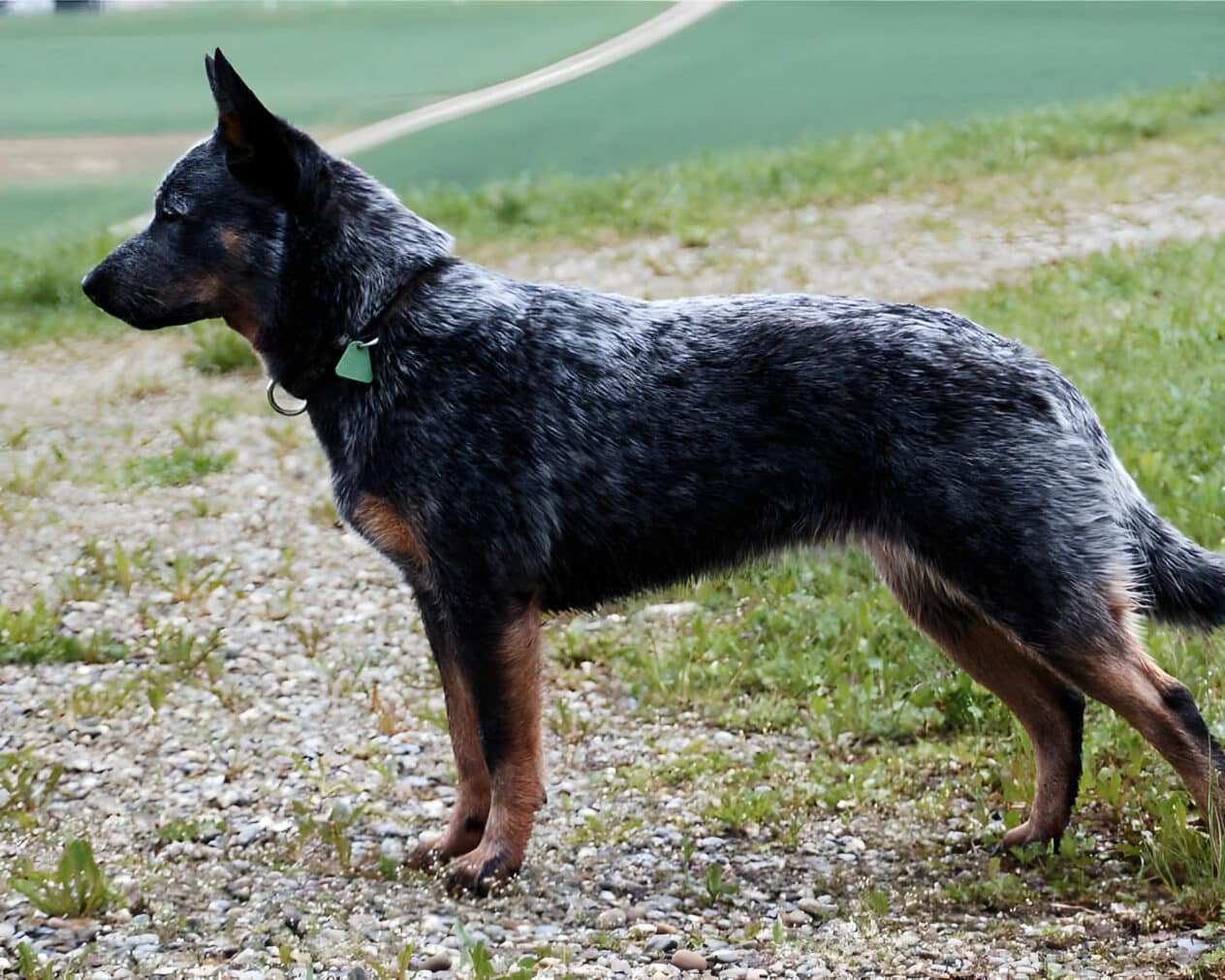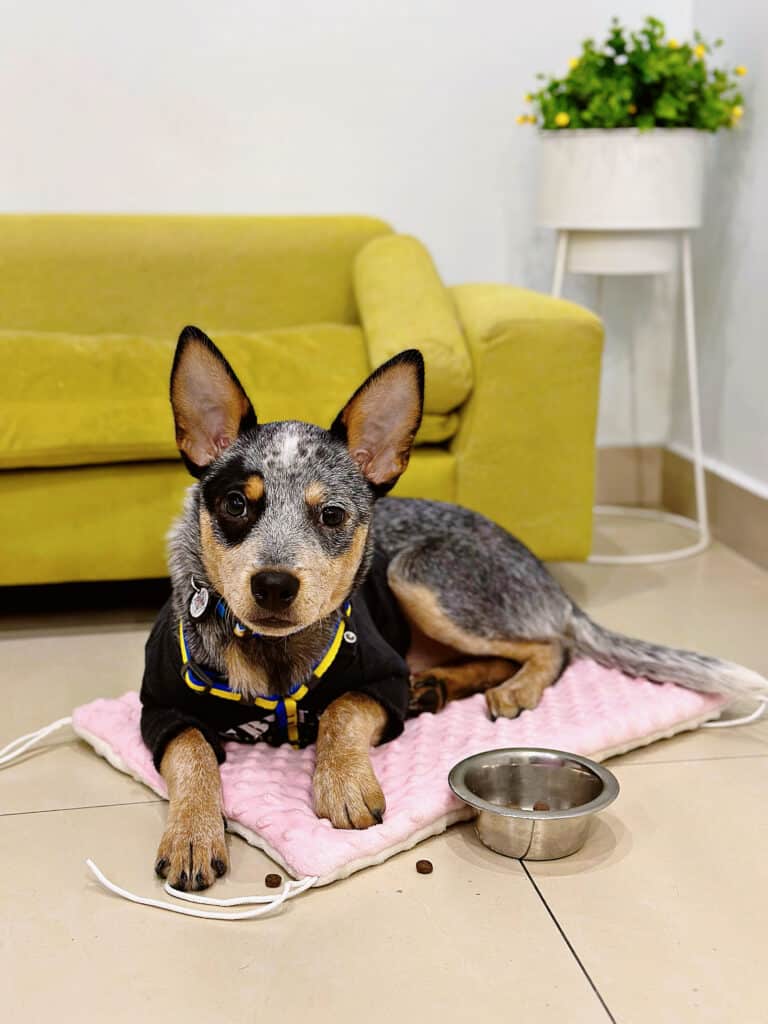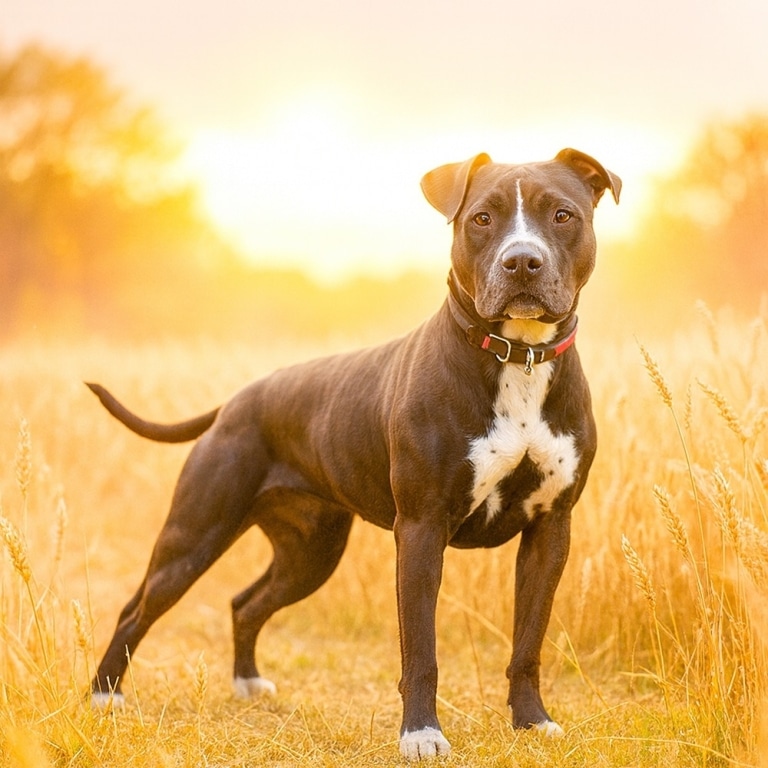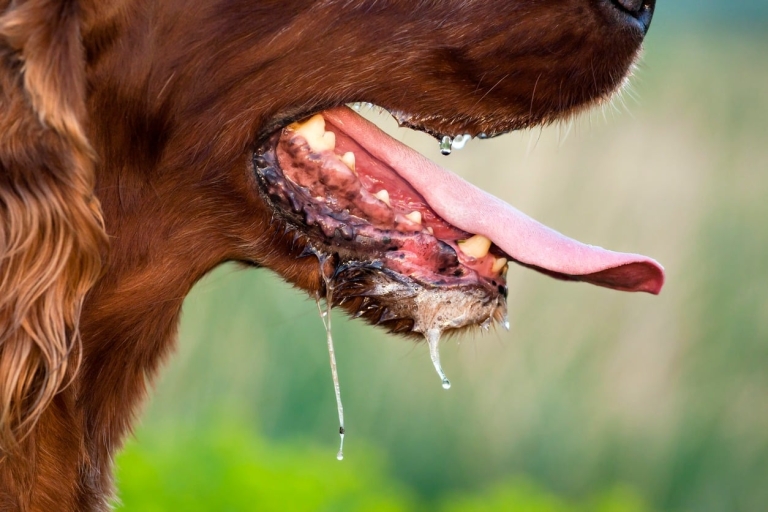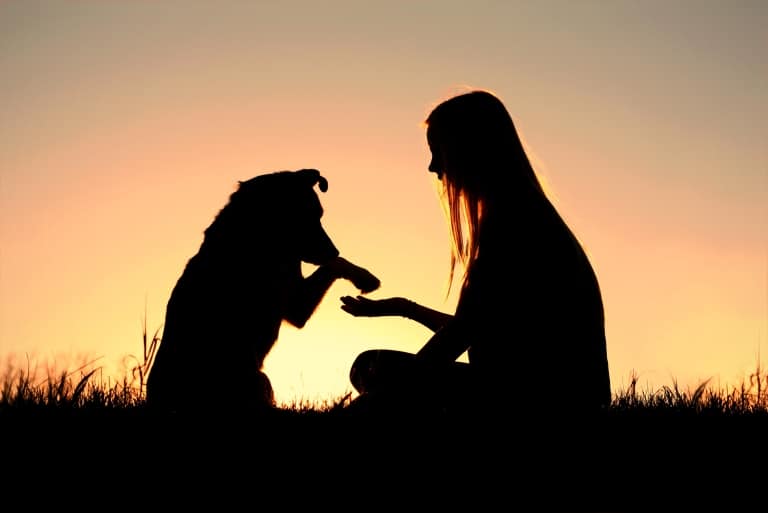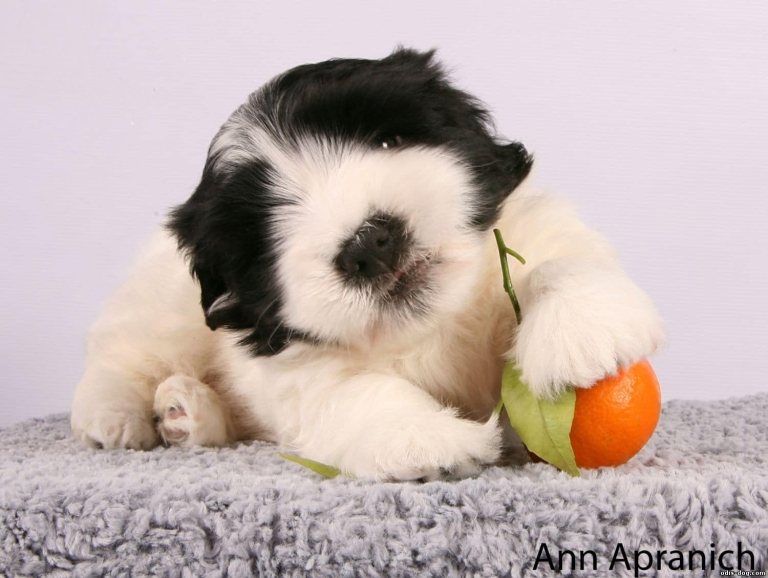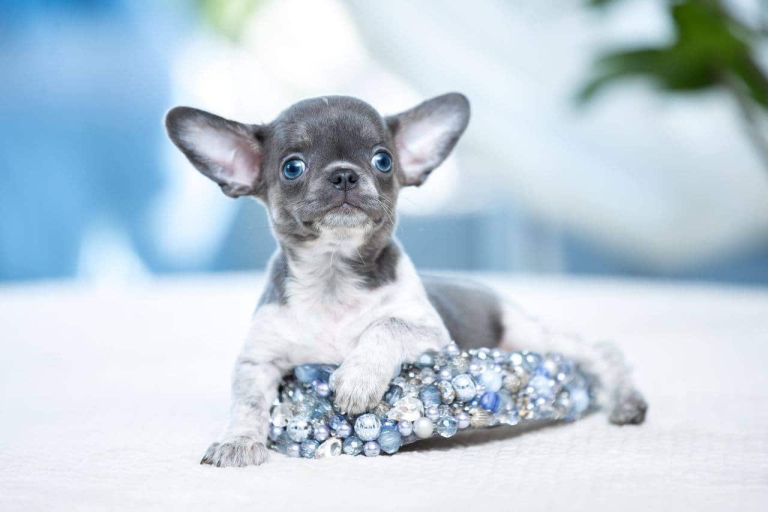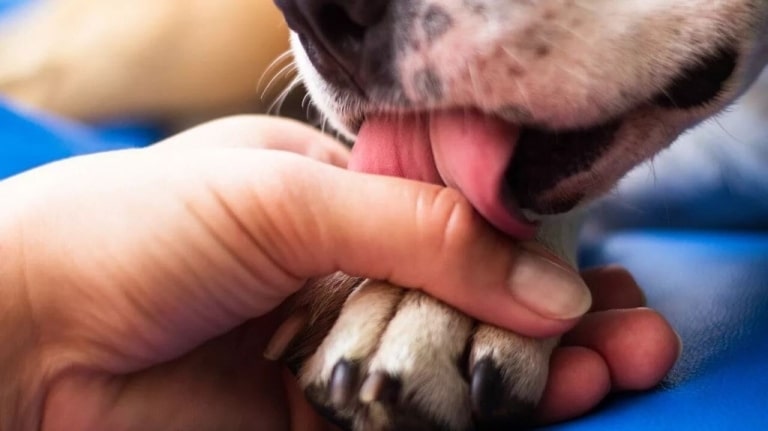Australian healer, kettle, bouvier, cattle dog or Australian cattleman – these are all alternative names of the hero of our article. The breed was formerly used for herding tasks and got its name from its ability to grab cows and sheep by the heels to control the herd. The Heeler deftly falls to the ground after a bite to avoid being hit by a hoof and this specific method of control without barking sets it apart from other breeds.
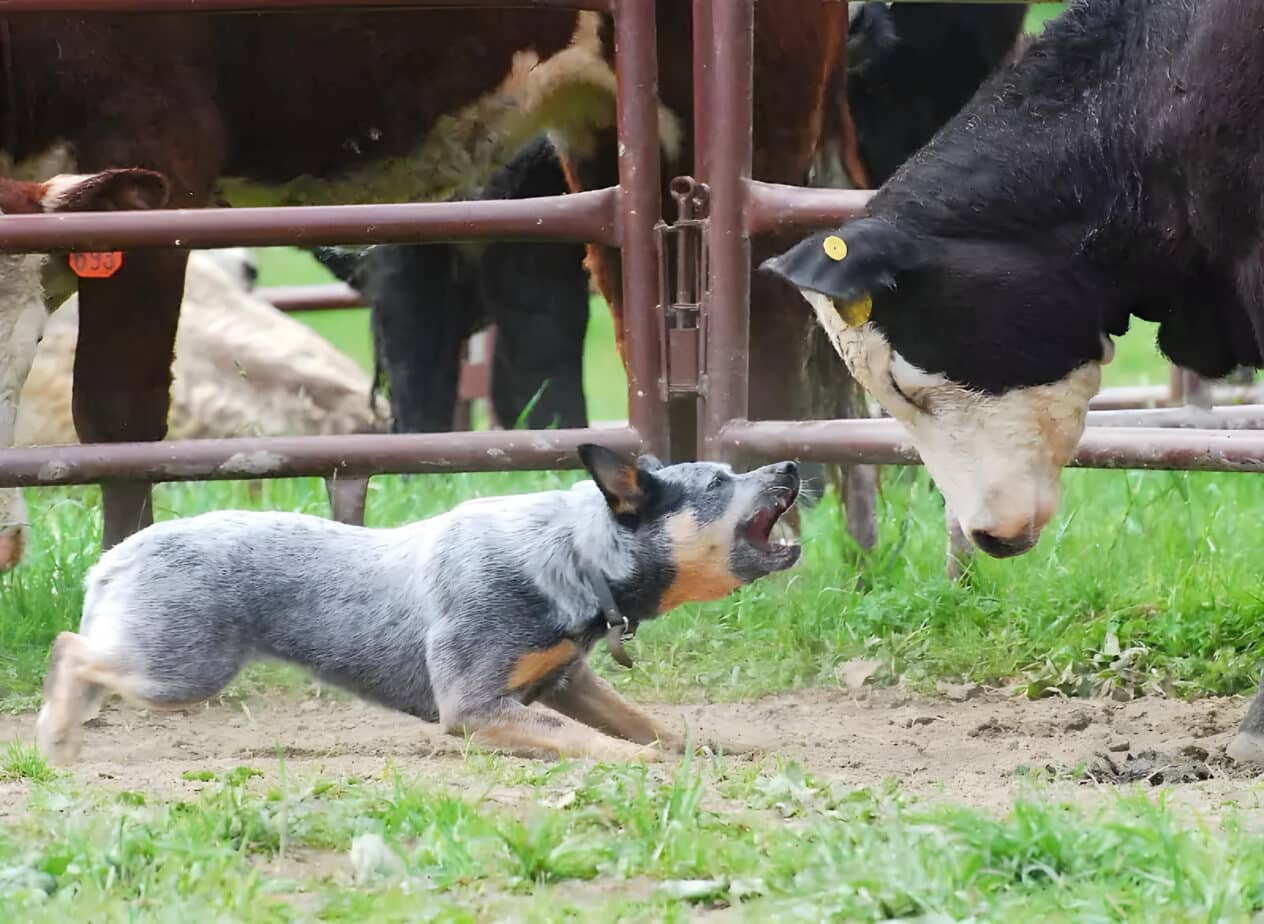
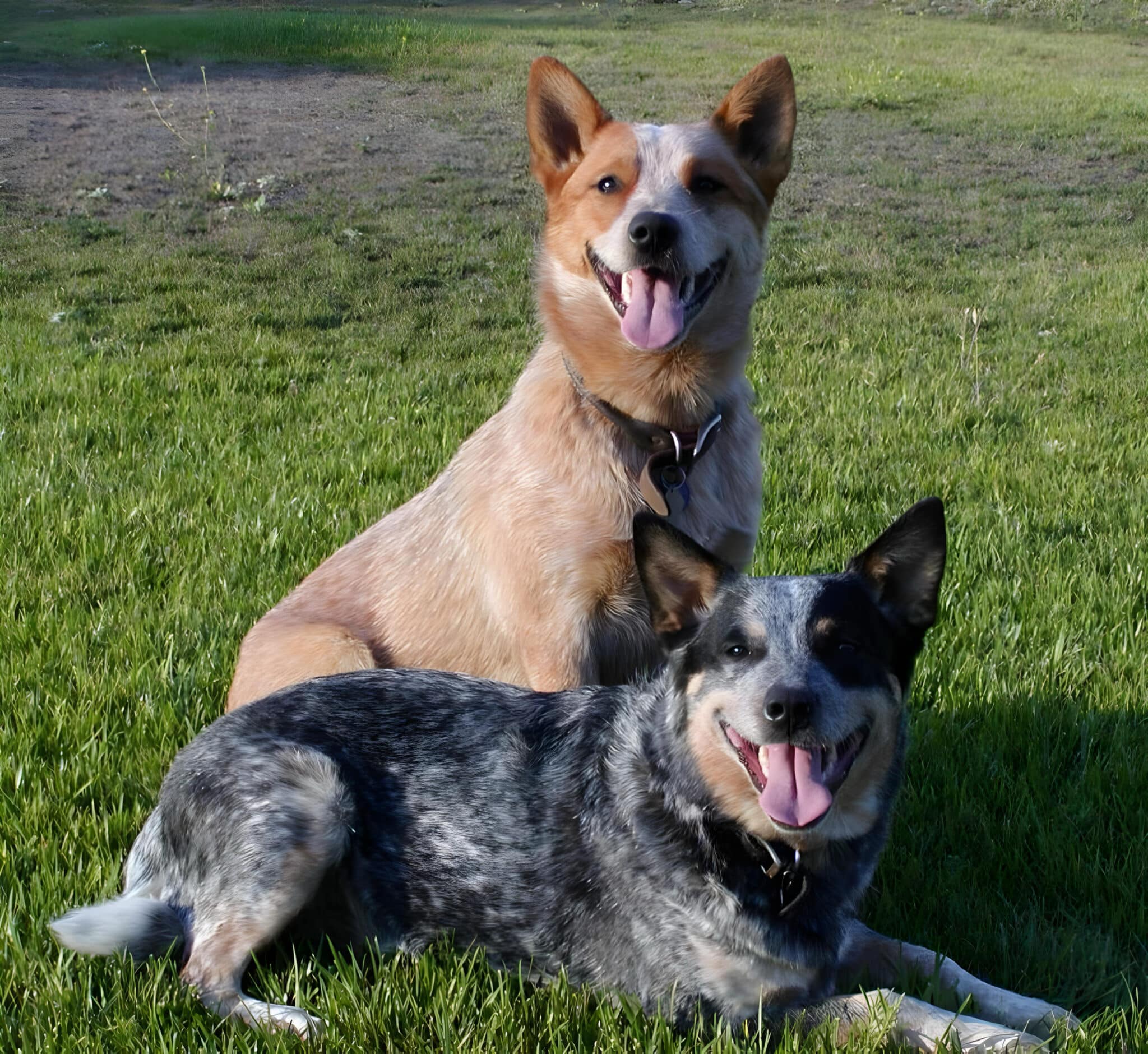
Today, the Australian Kettle is used not only by shepherds. He is very intelligent and quick-witted, easy to train, has a gentle character and is capable of giving himself up completely for the sake of his master. Therefore, more and more people choose this breed as a pet. For example, star actors Chris Pratt, Margot Robbie and Liam Hemsworth also preferred the Australian healer as a family member.
History of origin
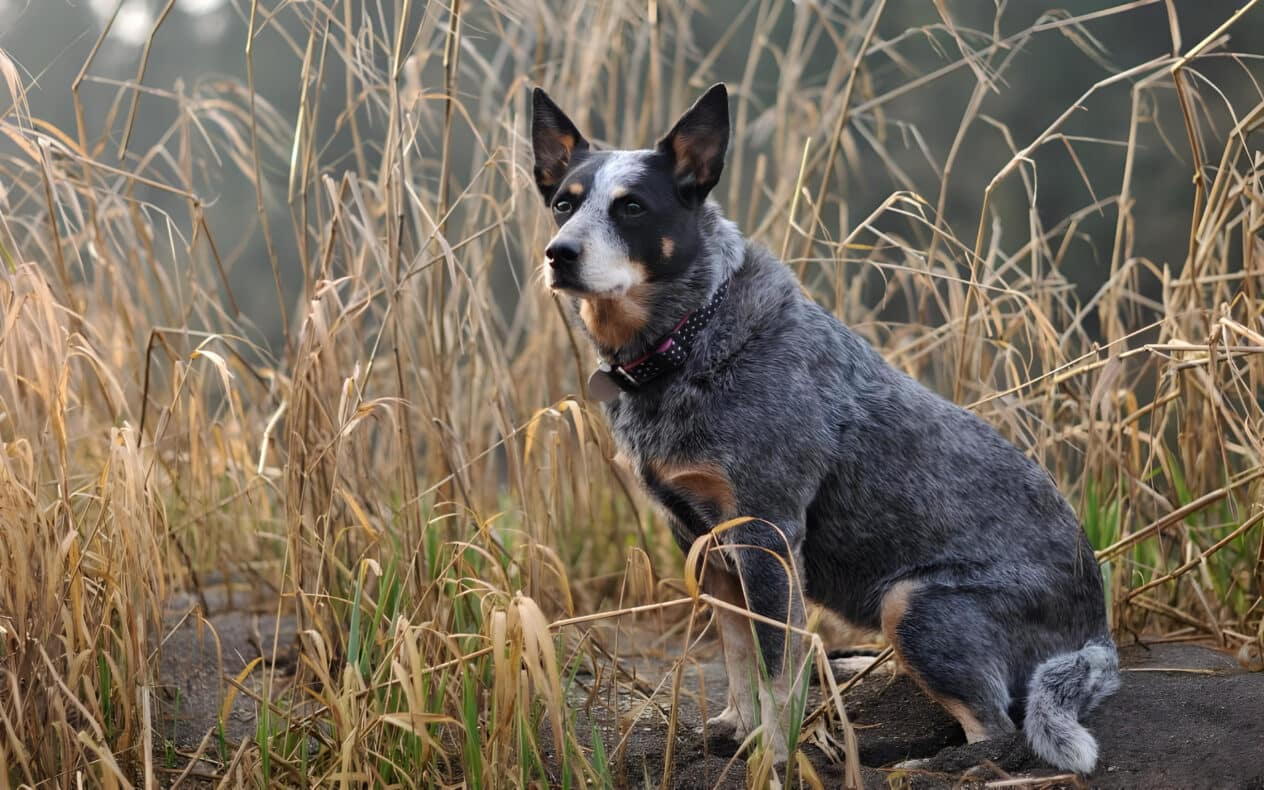
When the British immigrated to Australia in the 19th century, they brought with them their loyal companions – black bobtails, but they proved to be an ineffective herding breed due to the heat that prevails on the continent all year round. Therefore, when Thomas Hall found himself in New South Wales, he took with him Scottish marble-blue collies, which he bred with dingoes and obtained offspring that proved to be excellent shepherds and guards. In 1870, Hall’s farm was auctioned along with the unique dogs. One representative was purchased by brothers Harry and Jack Begust, who crossed it with a Dalmatian. As a result, the breed gained even greater endurance and love for horses. It is the dalmatian genes that lead to the fact that chiler puppies are born white. After crossing with the kelpie, in 1989 the international breed standard was approved. According to the typology of the International Federation of Cynological Societies, the Australian healer belongs to group 1 – shepherds and herders. This group includes dogs that were specially bred to work with livestock.
Appearance
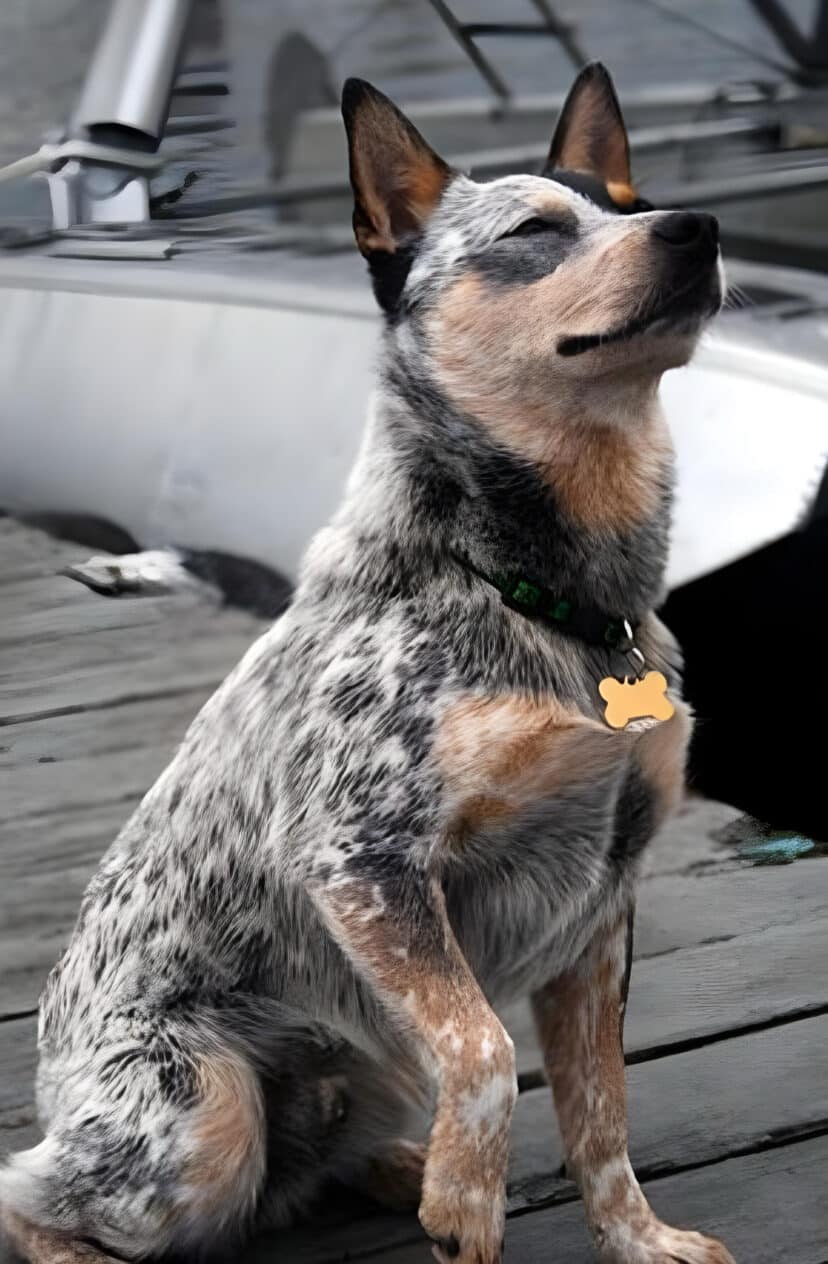
If you see this dog, you can definitely tell that it has a sinewy, compact body with a long tail. The height at the withers can reach 51 cm, and the weight is 23 kg. According to the standard, the length of the body should be greater than the height at the nape in a ratio of 10:9. This allows the dog to move quickly and instantly fall to the ground when grazing livestock. The eyes are dark brown in color, on the conical head there are widely spaced small, pointed ears, and the jaw is strong, with a deep bite. The wool is of a double type, hard, waterproof and has a specific color: blue, blue spotted and red spotted.
On average, these dogs live from 13 to 20 years, but there are exceptions. The fact about the oldest dog in the world was entered in the Guinness Book of Records, and it turned out to be the Australian healer Blue, who pleased his owner for 29 years!
Peculiarities of the breed
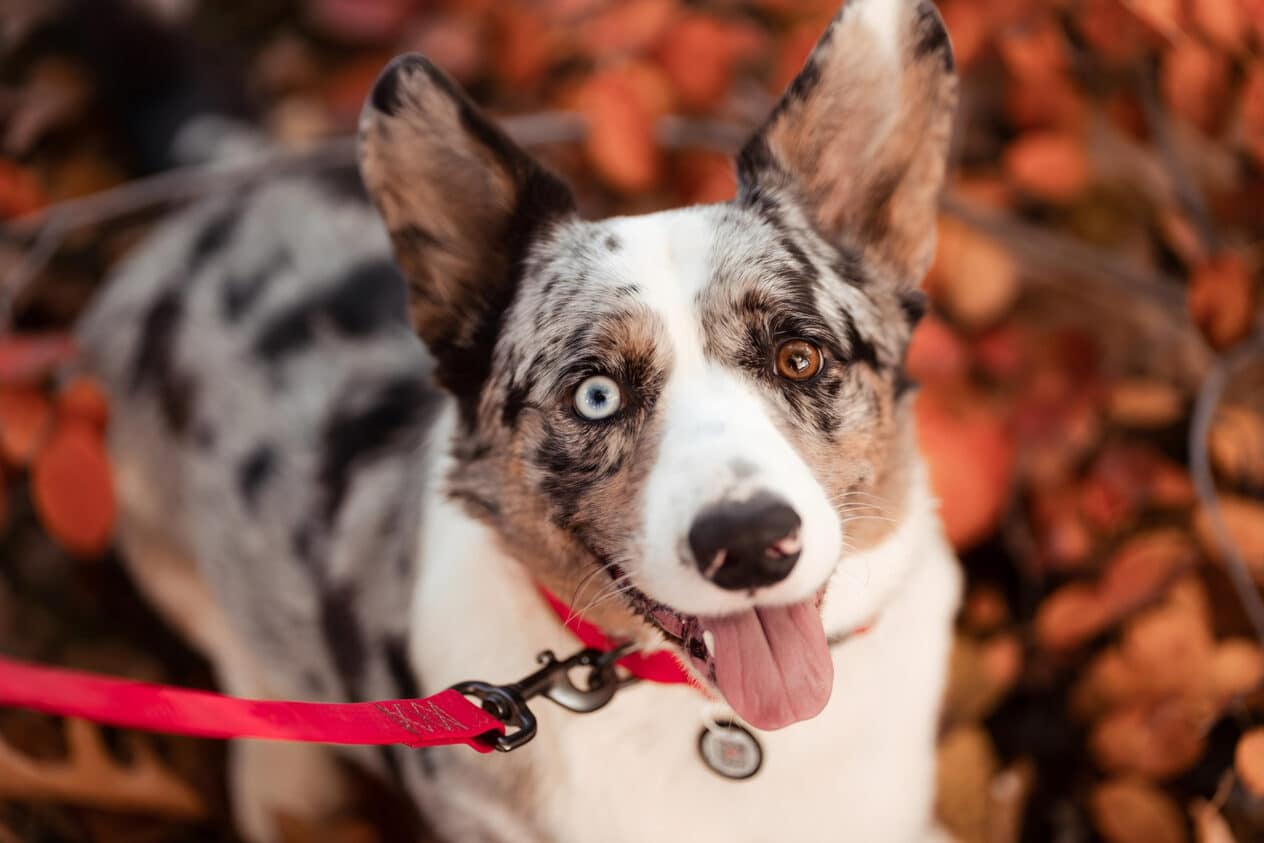
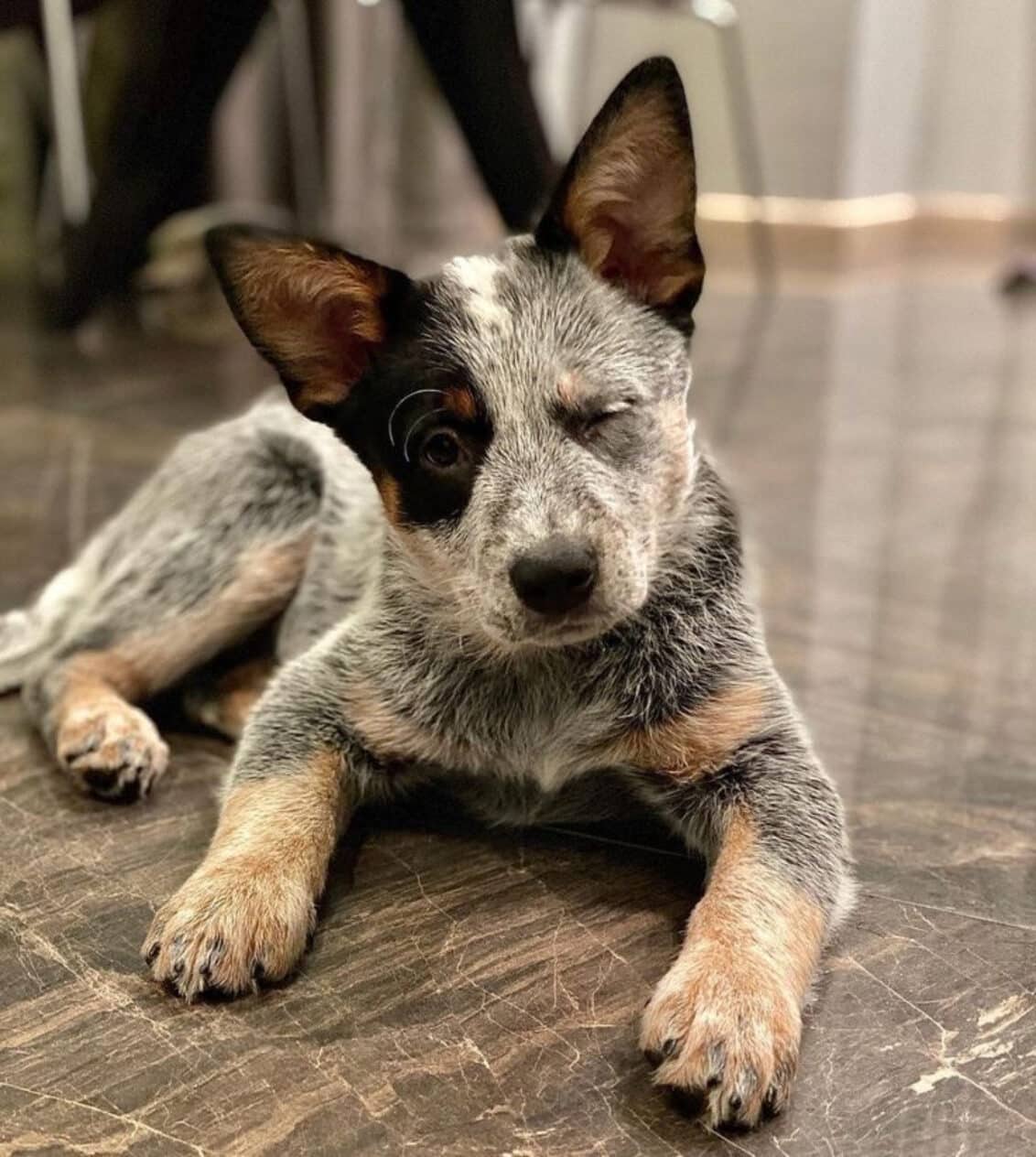
Intelligence and devotion. Representatives of the breed have high intelligence and learn quickly. They are devoted to their owners and can become faithful companions and reliable guardians.
Energy and diligence. Healers are great partners for an active lifestyle and can work for long hours without getting tired. That is why they adapt rather poorly to the urban environment.
High energy can be an advantage for active owners, but for those who cannot provide enough physical activity for the dog, it can be a challenge. Do not expect the dog to lie quietly next to you.
Working abilities. These dogs can perform a variety of tasks, including herding, search and rescue, and police and military work. If they don’t get enough attention and tasks, they may exhibit uncontrollable behavior or destroy things around the house.
Potential health problems. Like many other breeds, Australian Shepherds can have certain hereditary diseases and health problems. They have a genetic predisposition to progressive blindness (retinal atrophy), which appears suddenly at the age of 1-6 years, as well as cataracts and glaucoma. Other common diseases are congenital deafness and joint dysplasia. Also, dogs can be prone to allergies, especially to food. If your pet has persistent skin problems or gastrointestinal disorders, it is worth contacting a veterinarian to determine the allergen and change the diet.
Independence. These dogs can be somewhat independent and independent, especially in matters related to their work. They can make their own decisions and act according to the situation. For their complete obedience, it is necessary that they recognize the master as their leader.
The need for socialization and training. Australian Shepherds require adequate socialization and training from a young age. This helps to avoid unpleasant behavior and aggression. A little below we will tell you about the main points of animal socialization.
- It is important that the healer meets with different people. This helps them to become friendly and calm in different situations.
- Walking in different places, such as parks, beaches, city streets, helps dogs get used to different surroundings and sounds.
- Socialization with other dogs helps the healer learn to communicate and establish boundaries with members of his species.
- During socialization, create positive impressions for your pet. This helps him understand that new acquaintances and situations are not threatening.
- Train the healer and teach him the commands “sit”, “lay down”, “to me”, “fu”, etc. so that he can control his behavior in different situations.
Hygienic procedures
As we already know, the Australian Shepherd is known for its liveliness, hard work and intelligence, and like any pet, it needs some attention to its appearance, in particular hygiene. Grooming is an important part of care, so let’s consider its main stages:
Trimming the claws and caring for the pads of the paws
Heelers’ nails are sharpened naturally during active runs, but they still need to be checked regularly and trimmed as needed to prevent future mobility problems. Usually, healers are very sensitive to the touch of their paws, so if your pet refuses to trim its nails at home, contact a groomer or veterinarian. We also recommend lubricating the pads of the paws with a special wax or cream after walks to prevent cracks and dryness.
Сounting
Representatives of this breed have a double type of wool, which has a waterproof function. In this regard, the wool is not cut, but only regularly combed with the help of soft silicone brushes or other tools that are in the groomer’s arsenal. By cutting a healer, you risk permanently disrupting the coat’s waterproof function and thermoregulation.
Ear and eye care
As mentioned above, healers are prone to vision and hearing problems, so regular eye and ear care is a vital necessity. We recommend cleaning the ears with the help of special products and cotton pads and sticks. We draw your attention that only the inside of the ears need to be cleaned, only a veterinarian can climb into the hole. For the eyes, there are also special sprays and lotions that must be used after walks and as needed. If you notice that your pet’s eyes are red, watery, or swollen around them, contact your veterinarian.
Teeth cleaning
This procedure should be performed every day to keep teeth and gums in good condition. Do not use human toothpaste as it may contain ingredients that are harmful to animals. Choose special pastes for dogs, they have a pleasant taste and a safe composition. Regularly checking your dog’s teeth for plaque, tartar, or other problems can help prevent serious health problems.
Bathing and drying wool
Since this breed is prone to allergies, it is necessary to use hypoallergenic shampoos and conditioners. Pay special attention to the paws and genital area, because these dogs are not too concerned about hygiene. Inspect the skin for wounds, ticks, and dermatitis. The condition of the skin definitely affects the choice of cosmetics.
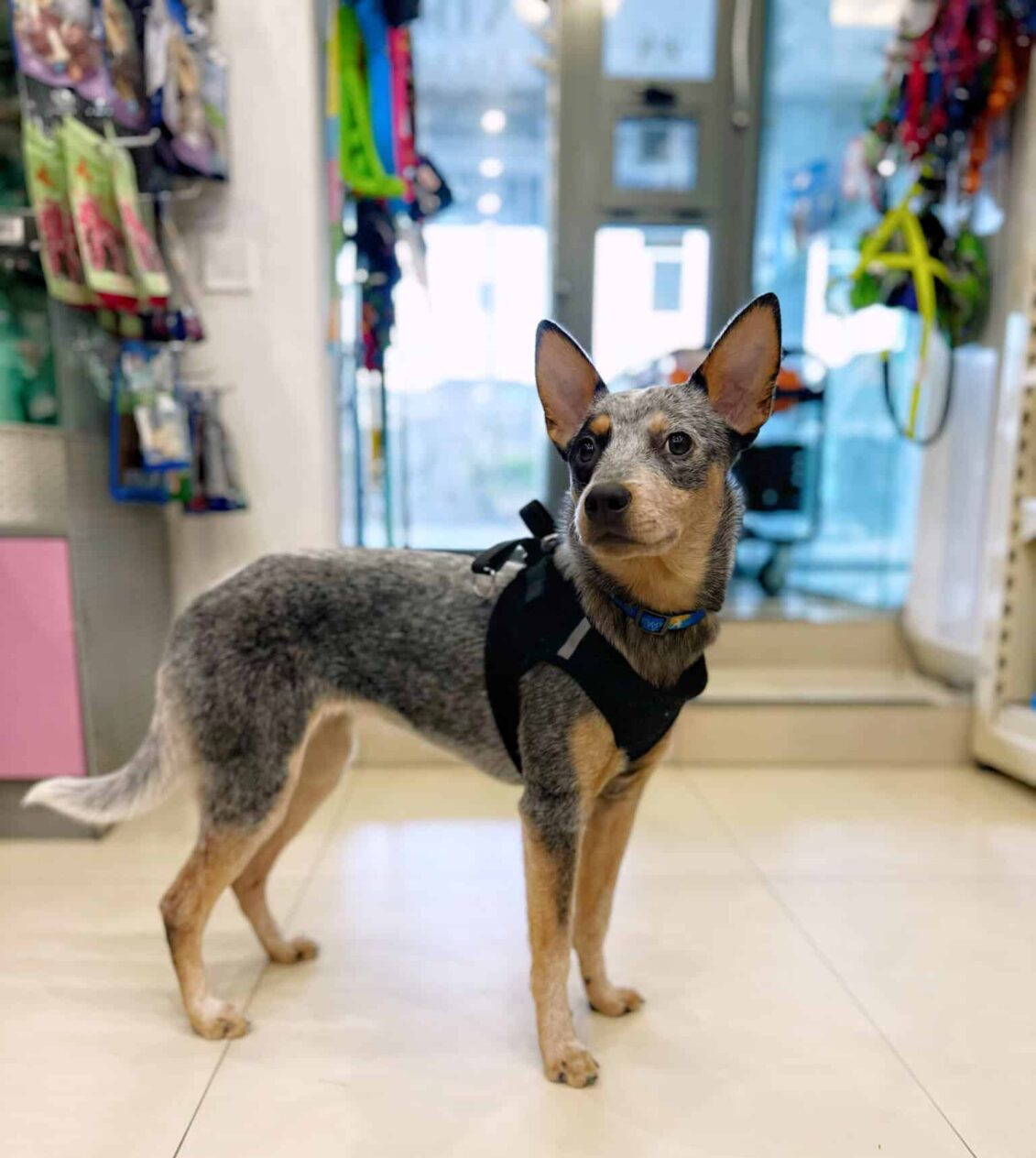
To ensure full care for your Australian Shepherd, it is worth visiting a professional groomer periodically. The V.O.G DOG chain of grooming salons can provide professional care for the coat, skin, claws and other aspects of your pet’s appearance.
The Australian Shepherd is not a breed for beginners, but if you pay enough attention to it, monitor its hygiene and health, actively spend time together, this dog will become your loyal friend for life!
